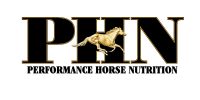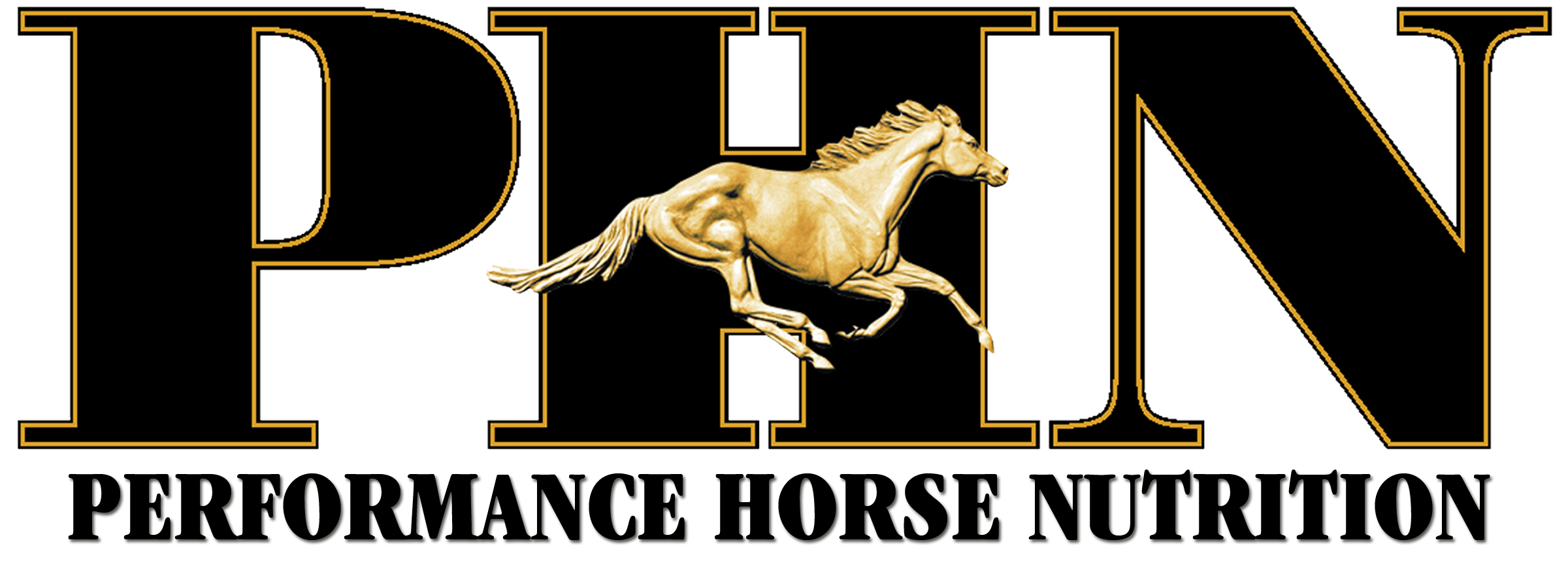THE EQUINE MICROBIOME
AND PROBIOTICS
IN HORSES
2024

Written by Dr. Stephen Duren – Performance Horse Nutrition
The digestive system of the horse is truly amazing. Simplistically, the digestive system of the horse can be thought of as a hollow tube that passes through the body from the mouth to just under the tail. It has the task of taking feed material in and then digesting that material. Nutrients that are useful to the horse are absorbed through the lining of the digestive tract while waste products are passed out of the digestive tract as manure. Horses have the ability to digest feed material utilizing enzymes in the small intestine, similar to humans. They also have the ability to ferment fibrous feed material (hay, pasture, beet pulp) in the large intestine with the help of an extensive microbiome consisting of bacteria, yeast and fungi). The ability of the digestive system to successfully digest feed and absorb nutrients is just part of its function. The digestive system and the microbiome it contains are also responsible for keeping harmful substances from entering the body. The horse, through normal grazing and feeding behavior, will take in many potentially dangerous substances that should not inhabit or be absorbed across the lining of the digestive tract into the body.
With the importance of the microbiome to healthy digestive system and to a healthy horse, the use of probiotics in feeds and supplements has become popular. A probiotic is a LIVE microorganism that is intended to have health benefits when consumed by the horse. Theoretically probiotics can help maintain or improve the “good” bacteria (normal microbiome) in the horse. Unfortunately, not all probiotics are what they appear or claim to be. A research study looked at 11 commercially available equine probiotics to evaluate their content (Journal of Equine Veterinary Science, 2021, Volume 106). None of the equine probiotic supplements met their label claim of viable microorganisms. Performance Horse Nutrition (PHN) in partnership with Kemin Industries set out to create a better equine probiotic – PHN GI Pro3.
To make a “better” probiotic PHN and Kemin needed to be sure the microorganisms arrived to the large intestine alive and ready to function. The first death trap for live microorganisms is to survive the heat of manufacturing. The pelleting process can expose the live bugs to short-term temperatures in excess of 1800 Fahrenheit. PHN GI Pro3 has been proven to survive the heat of pelleting. Next, the probiotic must survive the acidic conditions of the equine stomach. Testing of GI Pro3 in acidic conditions similar to the conditions of transit through the equine stomach again demonstrated the ability of the microorganisms in GI Pro3 to survive. We now know that GI Pro3 is capable of being manufactured into a product and that it has the ability to survive the conditions of the stomach to arrive at the large intestine alive.
So what does the probiotic “PHN GI Pro3 “actually do in the equine digestive system. This probiotic has the ability to inhibit bacteria that cause certain diseases in the horse. PHN GI Pro3 was tested in the laboratory and it has the ability to inhibit Clostridium, Rhodococcus, Streptococcus, and Salmonella bacteria. These “bad” bugs have the ability to create diseases ranging in symptoms from loose manure to explosive diarrhea and cause systemic bacterial infections, abscesses and microbiome dysbiosis. To be clear, PHN GI Pro3 does not have the ability to “treat” disease in a sick animal, but instead functions to help keep the digestive system clear of these bad bugs (pathogenic bacteria) potentially preventing disease.
This new probiotic is now being tested in selected equine feeds and supplements. In early testing, PHN GI Pro3 is a true probiotic that has the ability to arrive to the equine large intestine alive with proven pathogen inhibition.

